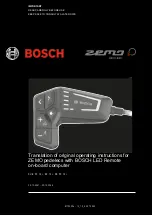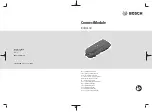
F
IV
E
>
S
E
R
V
IC
E
44
cracks or discoloration. These are all signs of stress-caused
fatigue and indicate that a part is at the end of its useful life and
needs to be replaced.
✔
Check to make sure that all parts and accessories are still secure,
and tighten any that require adjustment.
✔
Recharge battery after it has cooled to room temperature.
WARNING:
As with any mechanical device, your
bicycle and its components are subject to wear and
stress.
Your bicycle is made up of a range of different materials
and mechanisms which wear or fatigue from use at different
rates and have different life cycles. If a component’s life
cycle is exceeded, the component can suddenly fail, causing
serious injury or death to the rider. While the materials and
workmanship of your bicycle or of individual components may
be covered by a warranty for a specified period of time by the
manufacturer, this is no guarantee that the product will last the
term of the warranty. Product life is often related to the kind
of riding you do and the treatment to which you submit your
bicycle. The bicycle’s warranty is not meant to suggest that the
bicycle cannot be broken or will last forever. It only means that
the bicycle is covered subject to the terms of the warranty.
5.2
GETTING HOME WHEN SOMETHING
BREAKS
Unless you can walk home or call someone to pick you up if
something breaks on your bike, you should never go for a ride
without the following equipment:
✔
Patch Kit and spare tire tube.
✔
Tire levers (make sure they are plastic)
✔
Tire pump or cartridge inflator with the correct mounting head to
fit the type of valve you have on your tire (see Section 4.7)
✔
4mm, 5mm and 6mm Allen wrenches. These are used to tighten
various clamping bolts and are readily available from your local
dealer or most sporting goods shops.
✔
Small crescent wrench.
✔
Some money for a snack, beverage or emergency phone call.
✔
Some identification so people know who you are in case of an
accident.
IF YOU GET A FLAT TIRE
It is very likely that you will experience a flat tire at some point during
a ride. However, with the appropriate tools (see above), you can fix
it easily and be on your way again quickly. To change the tire tube,
find a safe place to perform your repair away from traffic or other
dangers. Start with depressing the tire valve to ensure all of the air
is out of the tube. Remove the wheel from your frame (see Section
4.1) and then remove the tube from the rim. To do this, grasp the
tire with both hands at a point opposite the valve stem and, at the
Summary of Contents for bicycle
Page 49: ...ohmcycles com...








































